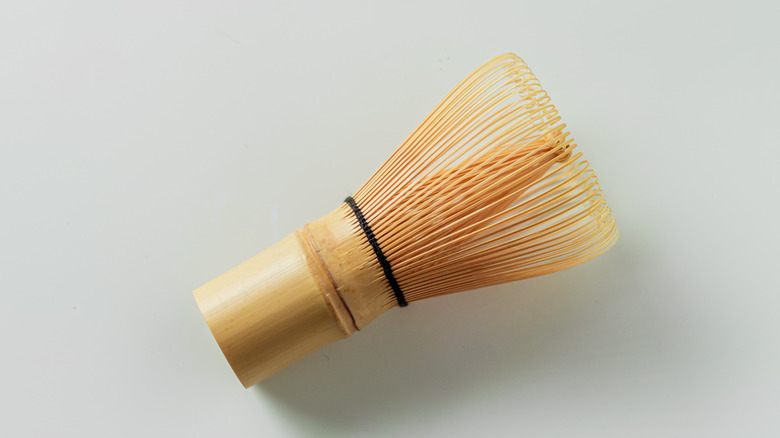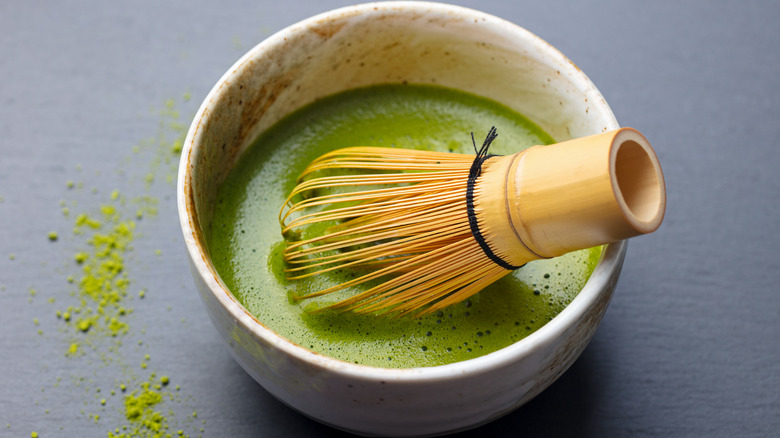You Should Be Soaking Your Matcha Whisk For The Best Results
Matcha has come a long way since the days when Japanese monks first drank it. What was once used in monasteries to sustain afternoon meditations is now consumed as casually as coffee — giving you the energy boost you need to take on the long days at work. As its popularity has risen in the West, so has the number of those trendy, colorful matcha cafes in Los Angeles — but, while time may have changed the way that matcha is enjoyed, not as much can be said about how it's prepared. In fact, if you're taken to making your matcha at home, you're more than likely making it the same way it always has been for centuries: with a bamboo whisk.
Some of you may have been enticed by the hand-held electric milk frothers, but the bamboo whisks, also called chasens, are specifically made to achieve the perfect matcha consistency. With a bit of hot water, a spoonful of your favorite matcha powder — whether it be ceremonial or culinary grade — and your go-to latte milk, a bamboo matcha whisk will give you the perfectly frothy, silky smooth sip. But, if you're still being met with a mouth full of clumps, soaking your whisk could be the step you're missing.
Soaking your matcha whisk
Not only does soaking your matcha whisk protect the thin tines from damage, but it makes them more flexible — ensuring you get the good, clump-free foam you want. To soak your matcha whisk, heat up the water for your matcha and pour enough for your whisk to soak in into the same bowl you use to mix your matcha. After that, all you need to do is let your whisk sit for about 30 seconds. Then, once it's finished soaking, you can empty the bowl, dry it, and start mixing your matcha as usual. Not only will your whisk be 20% stronger, but the thin tines will also be softer and more flexible — allowing you to achieve the perfect microfoam to top off your perfectly matcha-green-hued latte.
While the matcha whisk you ordered on Amazon probably wasn't handcrafted by one of the 18 remaining chasen masters in Takayama, Japan, and was more than likely mass-produced somewhere in China, it's still your most indispensable tool when making your matcha at home — and it should be treated as such. Caring for your matcha whisk is the best way to ensure your homemade matcha green tea continues to come out smooth and frothy, and it should always be washed, dried, and stored with its longevity in mind. But another aspect of caring for your matcha whisk, and arguably the most important, comes down to how you use it, and — after starting your kettle —the first step to making any type of matcha drink is soaking your whisk.

